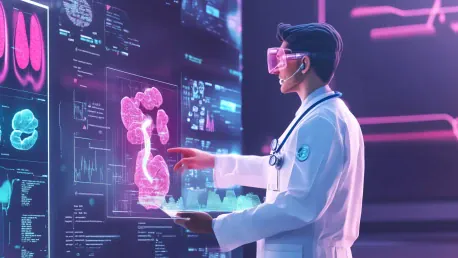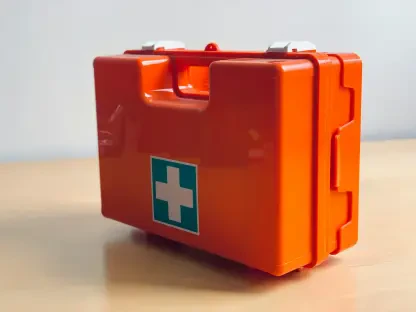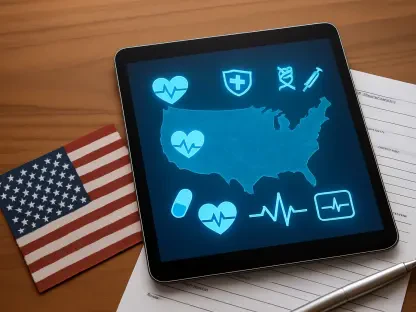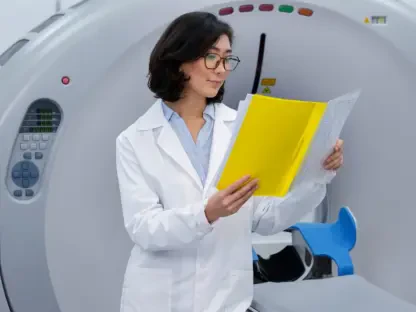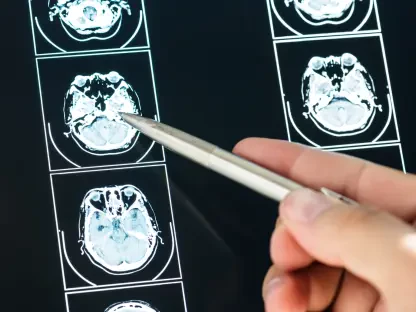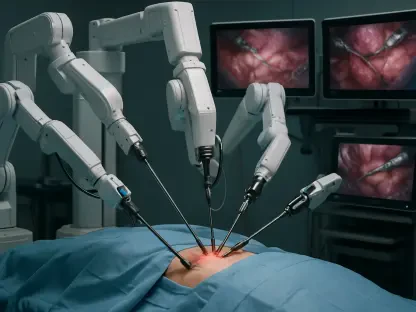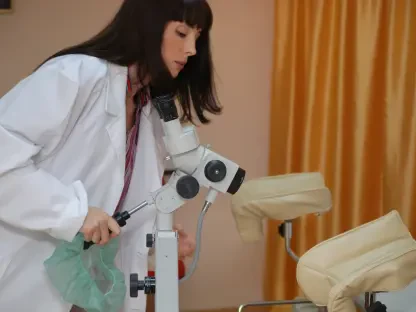The healthcare industry stands on the brink of a seismic shift, driven by breakthrough technologies that promise to transform patient care, streamline operations, and respond dynamically to crises. At the heart of this transformation is a set of key technological trends poised to revolutionize how healthcare is delivered and experienced. Invisible forces like the recent pandemic have accelerated the need for innovation, pushing the sector to adapt swiftly to new challenges. With insights drawn from the comprehensive Health x Digital Transformation Report 2024-2025, we dive into the top five health tech trends reshaping the landscape of healthcare, examining their current applications, potential impacts, and the roadmap for integrating these cutting-edge technologies within the next twelve months.
Augmented Intelligences: The Backbone of Smarter Healthcare
Artificial Intelligence (AI) is at the forefront of healthcare’s technological renaissance. By enhancing diagnostic accuracy, personalizing patient treatments, and streamlining administrative operations, AI has the capability to revolutionize healthcare across all dimensions. AI and machine learning algorithms sift through vast datasets to uncover patterns and insights that would be otherwise inaccessible, enabling healthcare providers to make informed decisions quickly. For example, AI-driven imaging tools can detect anomalies in medical scans faster and with greater accuracy than traditional methods, significantly reducing human error and improving patient outcomes.
Moreover, AI’s role isn’t limited to diagnostics. In administrative settings, AI-powered chatbots and virtual assistants help manage patient interactions, reducing the burden on medical staff and allowing them to focus on critical tasks. The automation of repetitive processes not only enhances efficiency but also boosts job satisfaction among healthcare professionals. These efficiencies extend to streamlining insurance claims and appointment scheduling, making the administrative side of healthcare more seamless. As AI technology continues to advance, it is likely that its integration into various healthcare workflows will become even more sophisticated, paving the way for a more intelligent and responsive healthcare system.
Simulation and Simulacra: Training and Treatment Revolutionized
Simulation technologies such as virtual reality (VR), augmented reality (AR), digital twins, and 3D printing are set to revolutionize both medical training and patient treatment planning. These innovations offer practical, cost-effective, and risk-free training environments for healthcare professionals. VR and AR provide immersive learning experiences that replicate real-world scenarios without real-life consequences. Medical students and professionals can practice complex surgical procedures or patient interactions repeatedly, perfecting their skills before applying them in real-world settings. This hands-on experience is crucial for building confidence and competence among healthcare providers.
Digital twins, which create precise virtual models of physical systems, play a significant role in predictive analysis and personalized care. By representing patient-specific anatomical structures, digital twins enable healthcare providers to design individualized treatment plans. Additionally, 3D printing is revolutionizing the creation of custom implants and prosthetics, tailored to fit each patient’s unique anatomy perfectly. The capability of these technologies to replicate exact human attributes means that less margin for error exists in both training and actual medical procedures. Whether it’s a life-saving organ transplant or a simple bone replacement, 3D printing adds a crucial layer of precision and customization that was previously unattainable.
Remote Patient Care: Extending the Reach of Healthcare Services
Adoption of remote patient care technologies has surged, particularly in response to the pandemic. Telehealth services and remote patient monitoring systems have become indispensable, reducing the need for physical hospital visits and mitigating the risk of hospital-acquired infections. These technologies are transforming healthcare by putting patient-centric care at the forefront, meeting individuals where they are and enhancing accessibility to healthcare services. Remote consultations allow patients to receive medical advice and follow-up care without the need to travel, which is especially beneficial for those in remote or underserved areas.
Furthermore, chronic disease management and post-operative care benefit enormously from continuous remote monitoring. Wearable devices and smart sensors collect real-time health data, enabling timely interventions and adjustments in treatment plans. This continuous oversight ensures better management of health conditions, reducing complications, and improving overall quality of life. Not only do these technologies alleviate the strain on healthcare systems, but they also empower patients by giving them more control over their health. Remote patient care bridges the gap between healthcare providers and patients, ensuring that the quality of care is consistently high, regardless of the distance.
Building Resilient and Adaptable Health Systems
Technological advancements are not just about improving existing processes but also about building healthcare systems capable of withstanding crises and adapting to rapid changes. The importance of system resilience and adaptability has never been more evident than in recent years. Tools that enable dynamic response capabilities are essential for healthcare facilities to remain functional and efficient during emergencies. Real-time data analytics and predictive tools allow for better resource allocation and preparedness. These systems support decision-making processes that are data-driven, quick, and effective, crucial for handling public health emergencies, such as pandemics or natural disasters.
Moreover, continuous learning and professional development are vital for healthcare professionals to keep pace with technological advancements. Training programs leveraging the latest technologies ensure that healthcare workers are equipped with the knowledge and skills needed to implement and manage these innovations effectively. Institutions are increasingly focusing on creating adaptable curricula that can evolve with rapid tech advancements. Courses on AI, cybersecurity, and data analytics are becoming integral parts of medical education, preparing the workforce for a highly dynamic and tech-centric healthcare environment. Building a resilient health system is an ongoing effort, requiring constant vigilance, innovation, and investment.
Biotechnology Breakthroughs: The Next Frontier in Patient Care
Biotechnology advancements offer the next frontier in patient care, opening new avenues for personalized medicine, targeted therapies, and genetic treatments. Breakthroughs in gene editing, such as CRISPR, enable unprecedented control over genetic material, providing potential cures for hereditary diseases that were previously deemed untreatable. Innovations in biopharmaceuticals also lead to the development of more effective drugs with fewer side effects. Additionally, regenerative medicine, including stem cell therapy and tissue engineering, shows promise in repairing or replacing damaged tissues and organs, offering new hope for patients with chronic conditions.
Integration of biotechnology into clinical practice requires robust regulatory frameworks to ensure safety and efficacy. Oncology is one of the areas significantly benefiting from biomedical innovations. For example, personalized cancer vaccines stimulate the patient’s immune system to target cancer cells without harming healthy tissues. Advances in precision medicine allow treatments to be tailored to the genetic makeup of both the patient and the disease, maximizing therapeutic outcomes while minimizing adverse effects. As biotechnology continues to evolve, its application in healthcare will likely lead to more effective, personalized, and less invasive treatment options.
